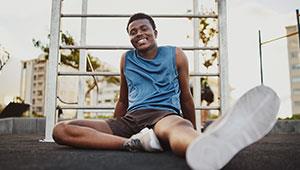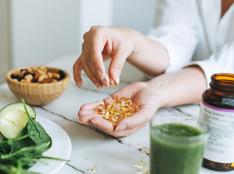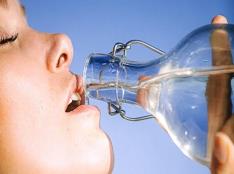
Even non-runners have heard of carb-loading. They might joke about how runners get to drink all the beer and eat all the pasta they want. But there's a lot more to it than just gorging on bagels and beer.
Glycogen is the main source of energy for long endurance runs. Carbohydrates are stored as glycogen in the liver and in the muscles. Your body can store about 2000 calories worth of glycogen. That's enough calories to provide energy for about 18 miles of running. Once this supply is depleted, the body starts to burn fat. Sounds like a good back-up plan, but the problem is that the body takes longer to metabolize fat for energy.
Ever hear of "hitting the wall"? That's when a runner's body shuts down mentally and physically. The cause is often from depleted carb stores. There's just nothing left in the tank; hence the importance of fully stocked glycogen stores before the race. It's also important to keep these stores refueled during the race by drinking sports drink and/or ingesting other quick carbs such as energy gels, chews, or beans about every 30 to 45 minutes during the race.
Back to carb-loading?past thinking had runners ingesting lots of carbs the entire last week of the taper. I've found that the last three days prior to the race is plenty of time to make sure you're fueled up for the big day.
During this three day-period before race day, your carbohydrate intake should increase to 70 to 80 percent of your total daily caloric intake. That doesn't mean you're taking in more calories, it just means that of the calories you're taking in, 70 to 80 percent need to be comprised of carbs.
Not all carbs are alike, Knowing the differences and eating the right kinds at the right time during the carb-loading phase can make a huge difference. Complex carbs are comprised of unrefined whole grain foods such as whole grain breads, legumes, brown rice, and whole grain pasta. Simple carbs are foods made of refined and/or processed grains such as white bread, regular pasta, white rice, packaged cookies, cakes, and doughnuts. Fruits are technically simple carbs too, but they're very nutrient dense and I would never put them in the same category as a doughnut. Keep in mind that eating a banana will provide quick energy because your body will process it very quickly, while a low-fat bran muffin will sustain your energy needs a lot longer.
There's no specific menu to eat for this carb-loading phase. There are so many factors involved—likes, dislikes, allergies, digestive tolerance, and on and on. What works for one runner may have another runner praying to the porcelain god (or more accurately the plastic port-a-john god) the entire run.
There are however, some good rules of thumb to follow. The first rule of thumb is to test your nutrition well in advance. It's best to try new foods when you're not in training. If you are training, it's best to test new things early on so you'll know ahead of time what does and doesn't work for you. Then stick to what you know works when it's close to race day.
- 1
- of
- 2








Discuss This Article